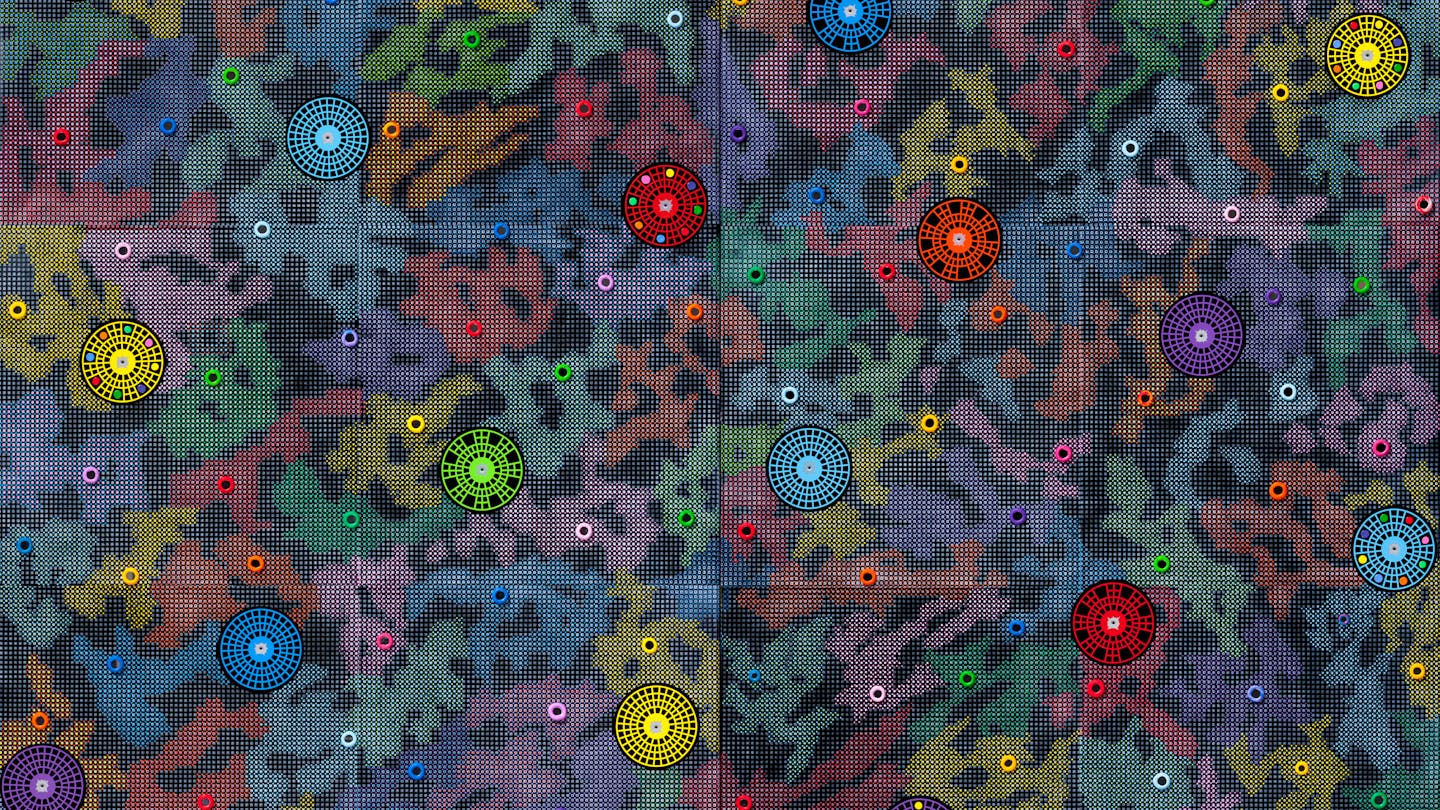
With bad news-overload it is easy to conclude it is time to disengage. But troubling events don’t go away just because you stop looking. Janenne Eaton’s retrospective reminds us that art can provide new perspectives and a reason to look even harder.
As a respected painter and teacher Eaton has influenced generations of Australian artists. She has exhibited extensively in museums and galleries nationally and internationally since 1978. Lines of Sight – Frame and Horizon is long overdue.
This comprehensive exhibition is aesthetically and intellectually compelling. The paintings, drawings and installations offer complex, layered reflections on key moments from the last four decades.
Rather than adopting a linear chronology, artworks are clustered to prompt dialogues between works across time. Eaton’s technical mastery and dexterity produces deliberate ambiguities. Her recognisable motifs and grid patterns convey rich ideas about human rights, colonisation, climate and First Nations justice, all underpinned by existential questions about uncertainty and meaning.
Locked in or locked out?
Supersized artworks populate the first space – Eaton’s underground car park drawings (1982–86) and two works using fences, from 2016 and 2019. Both series use layering to represent built structures, but proximity to each other in the gallery emphasises the differences.
The dusty, velvety surfaces of the car parks emphasise volume and perspective. The fences made from acrylic board and high-gloss enamel flatten and compress space.
In the carpark series, Eaton’s knowledge of art history is apparent in her Renaissance-influenced use of light and perspective. Texture and surface have been achieved by papering the canvas with found photocopies.
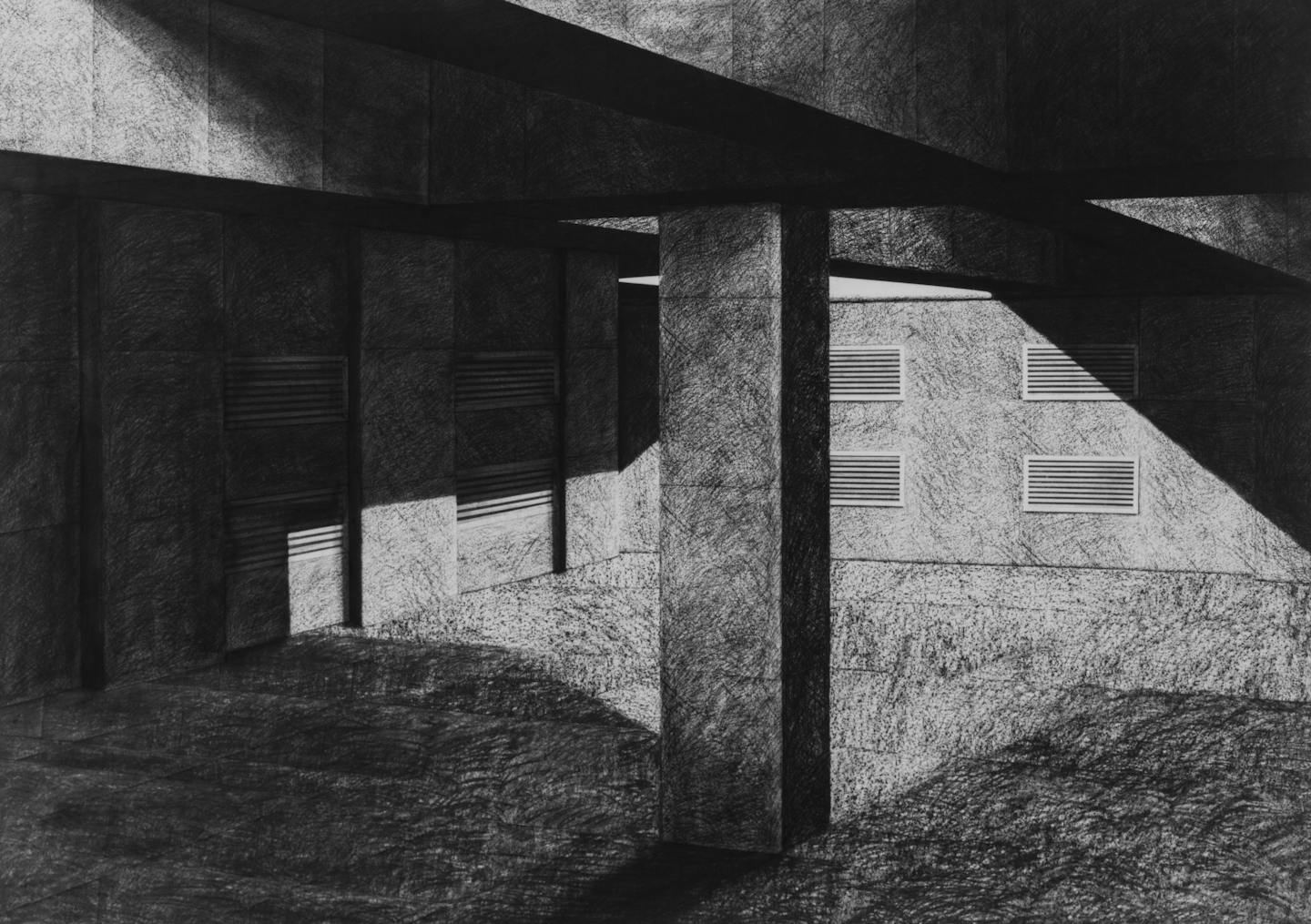
Dense, sooty carbon extracted from ink-cartridges smothers the solid areas and light in touch graphite and charcoal drawing produce an underground environment that some may find contemplative and others sinister.
They evoke an ambiguity of being simultaneously attracted and repelled. And there are sensory questions. Does it smell or echo? Is that the sun or artificial light? Is it hot or cold?
This series reflects Eaton’s training in archaeology and draws attention to the cultural significance of subterranean spaces. In a time of geopolitical turbulence and endemic inequality other readings are open to us.
By comparison, Fences, Borders, Walls (2016) makes clear who is locked in and who is locked out. The foreground dominates with hard-edged geometric forms; the word “fence” is mirrored and repeated, compromising its legibility but adding structural heft as a physical and psychological barrier.
The small diamond grid is immediately legible in the middle ground as the chain-link barriers that kept men, women and children refugees incarcerated for indefinite periods on Manus and Nauru. The skilfully airbrushed background provides gradations of light and shade, suggesting the movement of bodies.

In Borderlands (2019), the grid is reprised and the phrase “keep clear” repeated and butted against two upended half skulls that stare out at the viewer. We are implicated as we peer back into our own reflections in the empty intervals of glossy black.
Recognisable motifs
Eaton reworks familiar imagery from popular culture, mass media and advertising – gunshot decals, slogans, road signs, everyday idioms. The immediate visual recognition invites us into her work and encourages us to look harder.
Sometimes, the title and date alludes to a backstory. Banner for the Deputy Sheriff (2006) brings to mind depictions of John Howard as America’s “deputy sheriff”.
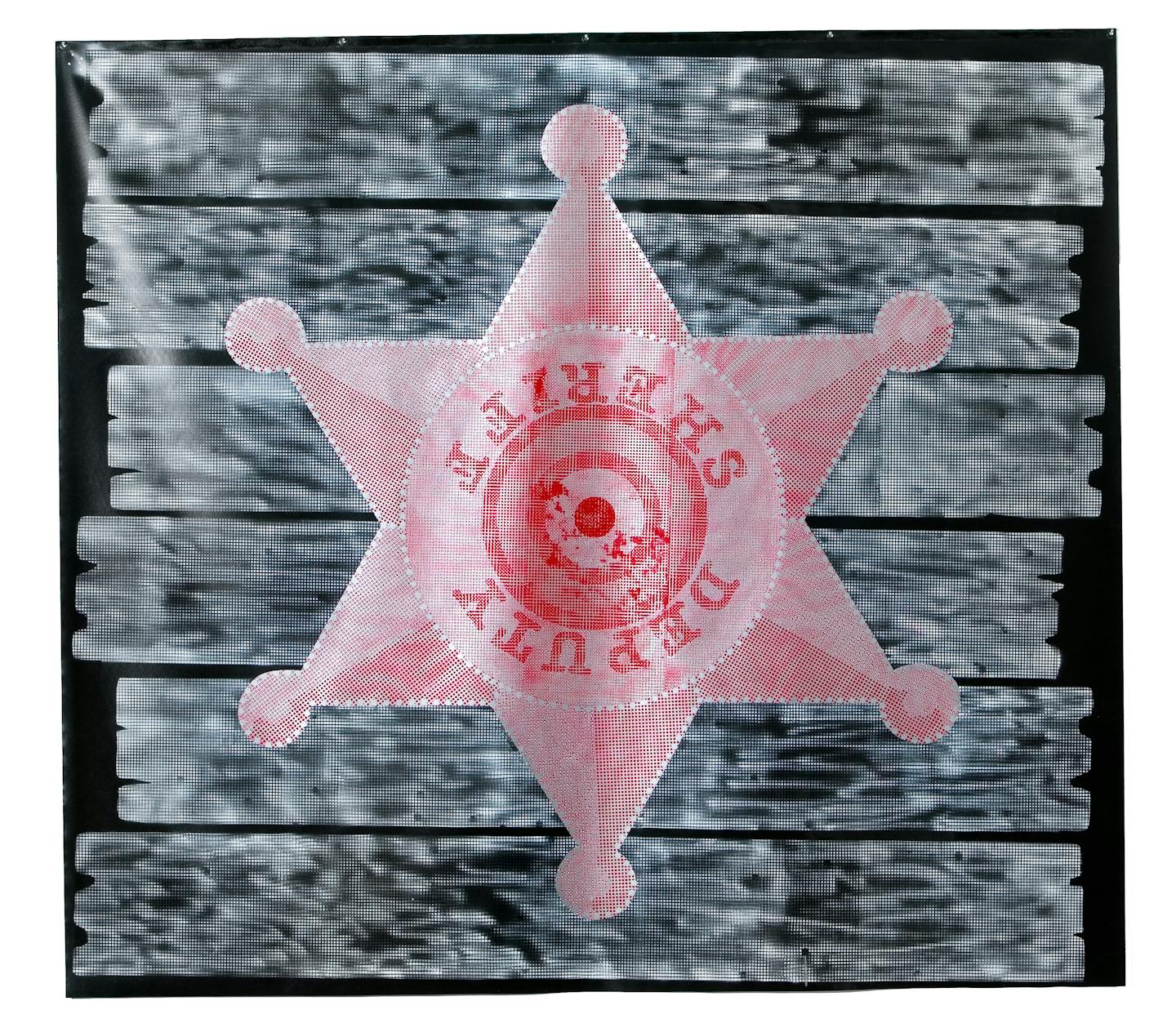
A two-metre toy sheriff’s star floats on a painted ground of ranch-like planks. The mismatched scale of the two planes suggests the overblown self-importance of a leader desperate to ingratiate himself in Washington, rather than galvanise relationships with Australia’s Asian and Pacific neighbours. At the centre of the star, the upended moniker “Deputy Sheriff” surrounds a shooting target replete with a smudgy spatter.
Bullet holes are regular motifs in Eaton’s compositions, as adhesive decals, perforations, or rendered in paint. Dark Star (2015) is a dense mix of bullet puncture holes, grids, stars and pop symbols and text. Like many of Eaton’s compositions, it is visually weighty.
Nearest Neighbour Analysis (2021) is light and airy, as Eaton connects her field of evenly spaced bullet-hole decals with a network of lines, creating a painting devoid of signs of earthly life that is both cellular and paradoxically celestial.
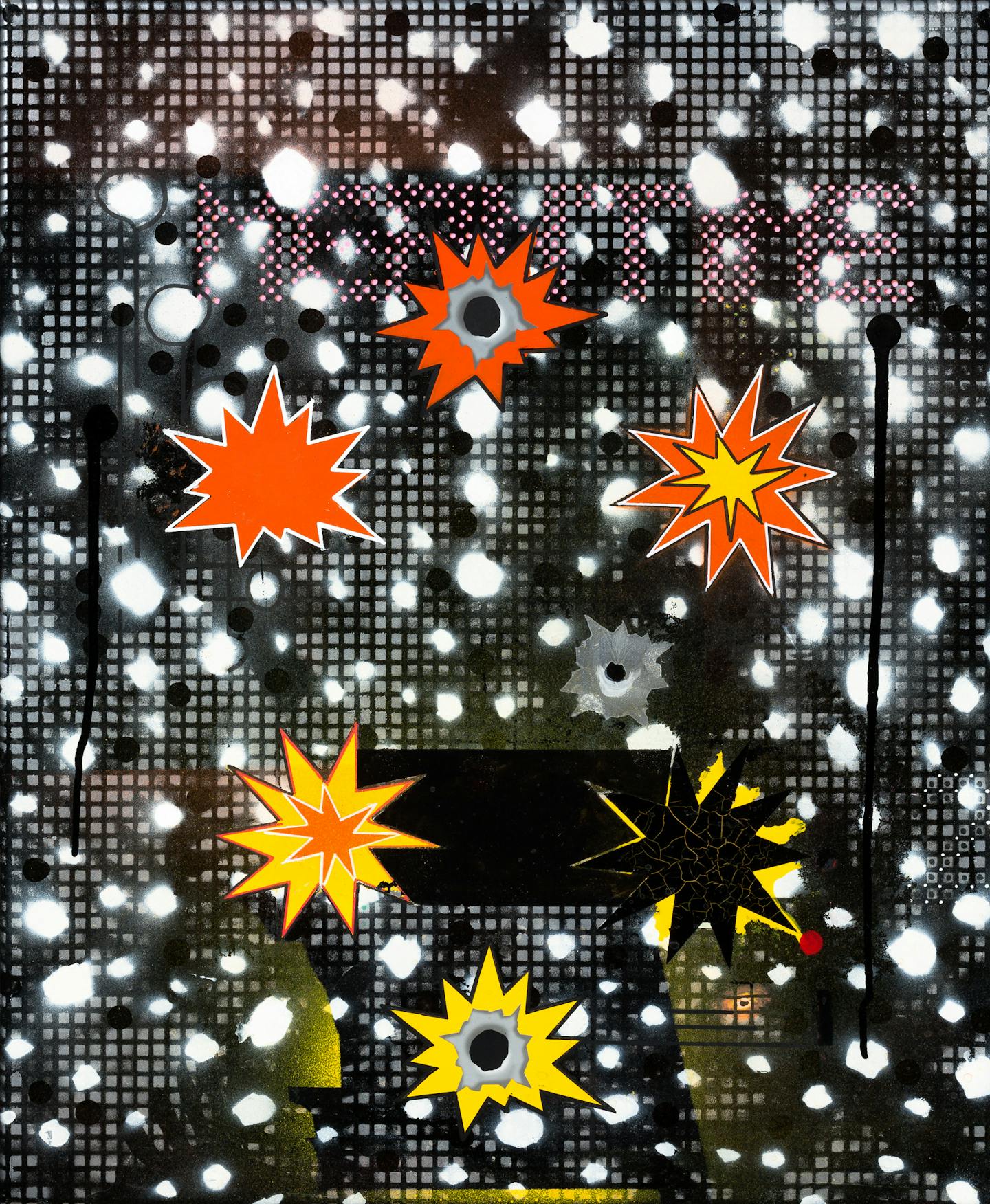
OUTGO (2009) is a speculative visualisation of a digital realm. Eaton’s painting draws on the aesthetics of the screen and corrupted computer code. Constructed from multiple layers of bitmaps and pixelations, gobbledygook text and marzipan-coloured lozenges appear to float across the picture plane. It is oddly luscious and captivating.
Eaton’s interest in archaeology and principles of stratification inform the layering processes in her artwork. Across the five rooms at Geelong Gallery, curator Jason Smith and Eaton have created a layered experience for the viewer.
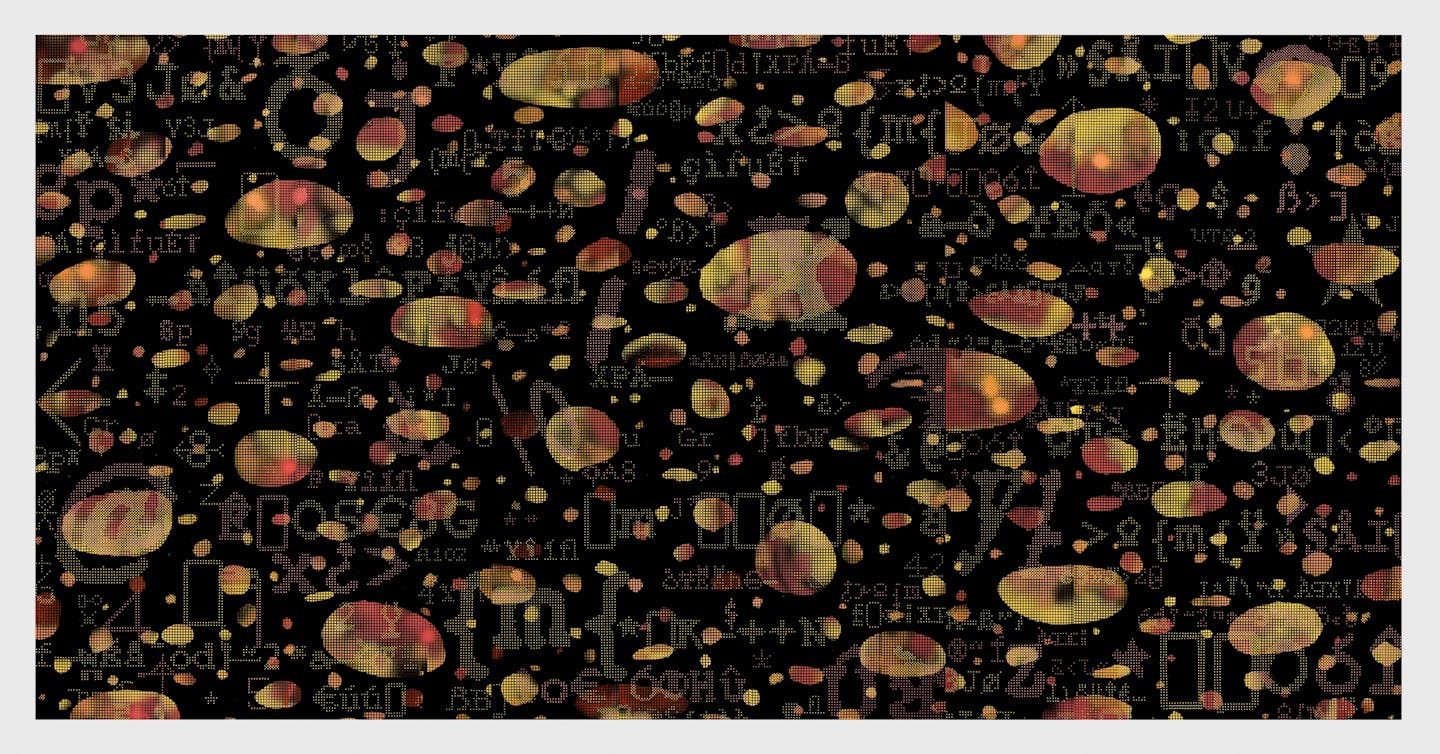
Aesthetic frissons, shifting ambiguities, hindsight and insight accumulate and become a complex account of the human condition in a time of flux and uncertainty. And it’s a potent reminder to look even harder.
Lines of Sight – Frame and Horizon, is at Geelong Gallery until August 17.
This article is republished from The Conversation, a nonprofit, independent news organization bringing you facts and trustworthy analysis to help you make sense of our complex world. It was written by: Julie Shiels, RMIT University
Read more:
- The surprising power of photography in ageing well
- A sculpture made from 80 tonnes of sand, Mirrorscape is remarkable – but too much is left unsaid
- The ‘extroverted’ north and ‘introverted’ south: how climate and culture influence Iranian architecture
Julie Shiels does not work for, consult, own shares in or receive funding from any company or organisation that would benefit from this article, and has disclosed no relevant affiliations beyond their academic appointment.


 The Conversation
The Conversation